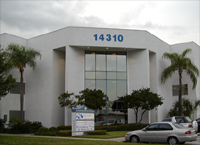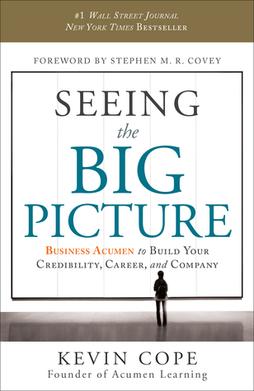A startup or start-up is a company or project undertaken by an entrepreneur to seek, develop, and validate a scalable business model. While entrepreneurship includes all new businesses including self-employment and businesses that do not intend to go public, startups are new businesses that intend to grow large beyond the solo-founder. During the beginning, startups face high uncertainty and have high rates of failure, but a minority of them do go on to become successful and influential.

Mentorship is the patronage, influence, guidance, or direction given by a mentor. A mentor is someone who teaches or gives help and advice to a less experienced and often younger person. In an organizational setting, a mentor influences the personal and professional growth of a mentee. Most traditional mentorships involve having senior employees mentor more junior employees, but mentors do not necessarily have to be more senior than the people they mentor. What matters is that mentors have experience that others can learn from.
In marketing, the unique selling proposition (USP), also called the unique selling point, or the unique value proposition (UVP) in the business model canvas, is the marketing strategy of informing customers about how one's own brand or product is superior to its competitors.

Anthony Michael Fadell is an American engineer, designer, entrepreneur, and investor. He was senior vice president of the iPod division at Apple Inc. and founder and former CEO of Nest Labs.

Business-to-business is a situation where one business makes a commercial transaction with another. This typically occurs when:

Inc. is an American business magazine founded in 1979 and based in New York City. The magazine publishes six issues per year, along with surrounding online and social media content. The magazine also produces several live and virtual events yearly.

Employee engagement is a fundamental concept in the effort to understand and describe, both qualitatively and quantitatively, the nature of the relationship between an organization and its employees. An "engaged employee" is defined as one who is fully absorbed by and enthusiastic about their work and so takes positive action to further the organization's reputation and interests. An engaged employee has a positive attitude towards the organization and its values. In contrast, a disengaged employee may range from someone doing the bare minimum at work, up to an employee who is actively damaging the company's work output and reputation.
SoftKey International was a software company founded by Kevin O'Leary in 1986 in Toronto, Ontario. It was known as The Learning Company from 1995 to 1999 after acquiring The Learning Company and taking its name.
Ram Charan is an Indian-American business consultant, speaker, and writer resident in Dallas, Texas.
The Learning Annex was an American education company based in New York City. It was founded in 1980 by Bill Zanker in his New York City studio apartment with a $5,000 investment.
Change management (CM) is a discipline that focuses on managing changes within an organization. Change management involves implementing approaches to prepare and support individuals, teams, and leaders in making organizational change. Change management is useful when organizations are considering major changes such as restructure, redirecting or redefining resources, updating or refining business process and systems, or introducing or updating digital technology.
Business acumen, also known as business savviness, business sense and business understanding, is a combination of knowledge, skills, and experience that enables individuals to understand business situations, make sound decisions, and drive successful outcomes for an organization. It is also defined as "keenness and quickness in understanding and dealing with a business situation in a manner that is likely to lead to a good outcome." It involves having a "big picture" view of the business, financial literacy, strategic thinking, problem-solving, and effective communication.
Training and development involve improving the effectiveness of organizations and the individuals and teams within them. Training may be viewed as related to immediate changes in organizational effectiveness via organized instruction, while development is related to the progress of longer-term organizational and employee goals. While training and development technically have differing definitions, the two are oftentimes used interchangeably and/or together. Training and development have historically been topics within adult education and applied psychology but have within the last two decades become closely associated with human resources management, talent management, human resources development, instructional design, human factors, and knowledge management.
Human Resource (HR) metrics are measurements used to determine the value and effectiveness of HR initiatives, typically including such areas as turnover, training, return on human capital, costs of labor, and expenses per employee.

vWorker was an employment website that enabled companies to outsource projects and independent contractors to find work. Together with Elance, Freelancer.com, Guru.com, and Upwork, it was one of the largest global freelance marketplaces of its kind. It organized and streamlined the management of outsourced employees.

Seeing the Big Picture: Business Acumen to Build Your Credibility, Career, and Company is a self-help book published in March 2012 by Greenleaf Book Group. Written by the founder of Acumen Learning, Kevin R. Cope, it is a covers the topic of business acumen. The author opines that a deep understanding of a company can make its employees' work more fulfilling and purpose-driven by highlighting how they influence the success of their team, department, or organization.
Customer success, customer success management, or client advocacy is a business strategy aimed at ensuring that customers achieve their desired outcomes while using a product or service. It involves proactive engagement, personalized support, and ongoing assistance to help customers derive maximum value from their investments. refers to the process of enhancing customers' satisfaction while using a product or service. As a specialized form of customer relationship management, customer success management focuses on implementing strategies that result in reduced customer churn and increased up-sell opportunities.
A social employee is a worker operating within a social business model. Following an organization's social computing guidelines, social employees use social media tools both for internal workflow and collaboration purposes and for external engagement with customers, prospects and stakeholders through a combination of social media marketing, content marketing, social marketing, and social selling. Social employee programs are considered to be as much about culture and engagement as they are about business processes and best practices. In addition to increased leads and sales, social employee best practices are said to improve business outcomes important to social media marketing, such as increased connections and web traffic, improved brand identification and "chatter", and better customer advocacy.
Adrian Robert Gostick is a British writer. He writes on employee engagement and organizational culture. In 2011, he founded The Culture Works, a Utah-based consulting firm. Among his notable books are The Carrot Principle, All In, and The Orange Revolution, co-authored with Chester Elton.
ActivTrak is an American company that produces workforce analytics and productivity software. The company was founded in 2009 by Birch Grove Software and is headquartered in Austin, Texas.







